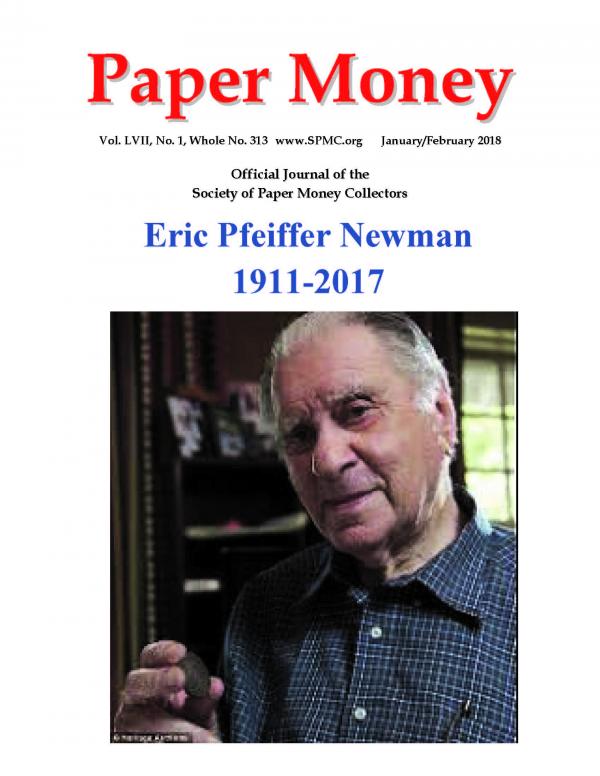Please sign up as a member or login to view and search this journal.

Table of Contents
Eric Pfeiffer Newman................................................................... 4
The Dies that Fathered 1872 & 1882 Nationals
Peter Huntoon..................................................................... 7
“Star Spangled” Merchant Scrip
Ron Spieker...................................................................... 14
Colony of North Carolina 1£ Note
David Lok......................................................................... ..21
The Adoue Banking Family of Dallas, TX
Frank Clark....................................................................... 25
U. S. Serial No. 1,000,000,000 Notes
Jamie Yakes & Peter Huntoon.................................................... 27
Uncoupled Joe Boling & Fred Schwan...................................... 31
New Members............................................................................. 37
Columbia, Tennessee’s First National Bank
John Abernathy........................................................................... 39
Father of the Adams Bank
Josh Colon.................................................................................. 47
A Detailed Survey of New FRNs
Carlson Chambliss..................................................................... 49
SPMC Obsolete Database Update.......................................... 57
Small Notes—Cleveland Cashier’s Missing Note..................... 61
Interesting Mining Notes—David Schenkman......................... 63
Obsolete Corner--Robert Gill.................................................... 65
Chump Change--Loren Gatch.................................................. 60
2017 Paper Money Index......................................................... 69


